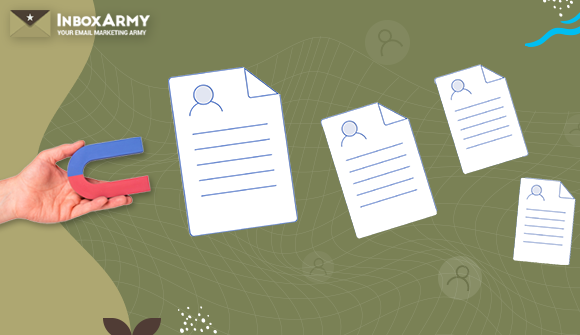Table of Contents
In this article, we will dive into eight of the most effective customer retention strategies employed by successful companies who are building enduring customer loyalty. But before we dive in, let’s first discuss why customer retention is so vital.
What Is Customer Retention?
Customer retention is just what it sounds like–the ability of a company to retain customers and their loyalty over time. Good customer retention programs encourage customers to continue to buy products or services from a company. The main goal is to cultivate long lasting relationships with customers, ensuring they remain loyal buyers and refrain from shifting to competitors.
Why is Customer Retention Important?
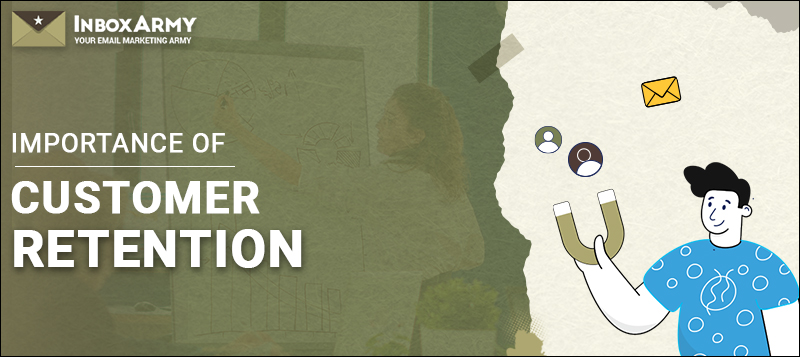
Customers have choices. Most markets have fierce competition for buyers. The companies that do well focus not just on customer acquisition, but turning first-time buyers into brand and product advocates over time. The benefits of doing this include:
Cost efficiency
New customer acquisition requires higher marketing and promotional costs. A well-implemented customer retention strategy saves substantial marketing, advertising, and outreach expenses while driving solid revenue. With a focus on retention, you can allocate resources more efficiently and maximize your ROI.
Predictable revenue streams
Whether you’re a subscription business or a business that has many products customers can buy, loyal customers who purchase repeatedly can offer you a more reliable source of revenue. All businesses are seeking consistent revenue, and repeat business from retention programs is where you will find it. This consistency will also play a role in your financial planning and forecasting, too, which helps you allocate appropriate resources for business growth.
Lifetime value considerations
Repeat business is a better indicator of Customer Lifetime Value (CLTV). This measure of total revenue a business can expect from customers during their engagement is a valuable metric for strategizing resource allocation, recognizing high-value customers, and tailoring your retention efforts.
Positive word-of-mouth
Loyal customer testimonials, reviews, and recommendations carry an authenticity that traditional advertising often lacks. Retained customers turn into brand advocates, influencing friends, family, and professional networks. This organic promotion reduces marketing spending and becomes a powerful tool for building brand reputation and trust.
Adaptability to evolving consumer expectations
Today’s consumers demand more than just products or services; they seek meaningful experiences. As customer expectations evolve, so should the strategies to meet them. Retention involves a continuous feedback loop wherein customer insights guide improvements to remain relevant.
Building emotional connections
Studies indicate that emotional connections significantly influence customer loyalty and bind them to the brand. Retaining customers involves creating memorable experiences, resonating with their emotions, and consistently meeting or surpassing expectations.
How to Calculate Customer Retention Rate (CRR)
Before we get into retention strategies, you should calculate your current customer retention rate. CRR will help you gauge the effectiveness of your efforts to keep existing customers over a period of time. You can use this formula to calculate CRR:
CRR = [(E – N) / S] x 100
E = the total number of customers at the end of the period.
N = the number of new customers acquired during the same period.
S = the number of customers at the start of the period.
For example, if E=100, N=10, and S=100, it would look like this:
CRR = [(100-10)/100] x 100 – 90% customer retention rate.
8 Customer Retention Strategies for Nurturing Lasting Connections
Yes, we talk email marketing a lot around here, but customer retention extends beyond just the email channel. Retaining customers is critical, so let’s explore customer retention strategies that brands have successfully implemented across their entire customer experience.
1. Exceptional customer service
Doesn’t matter how great your marketing is or how great your product or service might be, customer service plays a key role in customer satisfaction. Quick issue resolution and proactive problem-solving contribute to an exceptional customer experience.
Quick issue resolution
Resolving issues quickly showcases a commitment to customer satisfaction and enhances the overall customer experience. When issues are resolved quickly, it demonstrates responsiveness and prevents customer frustration.
For instance, companies like Amazon prioritize quick issue resolution through efficient customer service. In 2022, the US customer satisfaction score with Amazon.com was 84 out of 100 ASCI points.
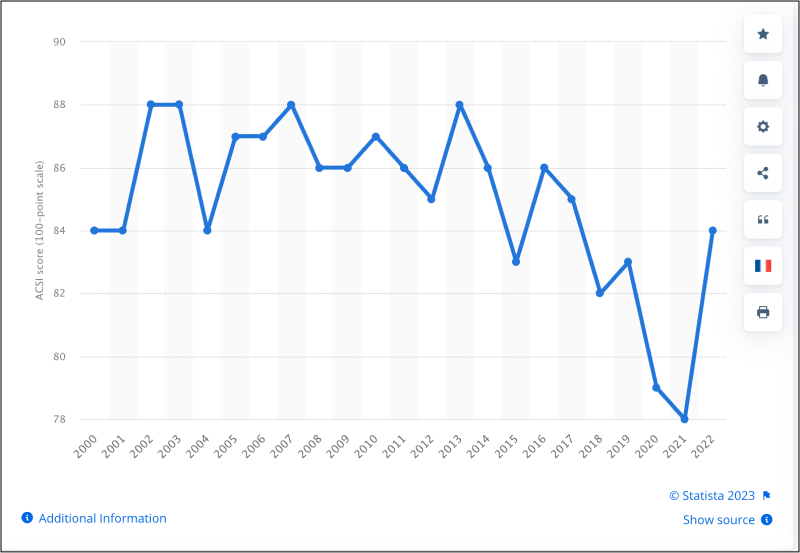
U.S. customer satisfaction with Amazon.com from 2000 to 2022 (index score)
By promptly addressing concerns, Amazon tends to retain customers and also fosters a positive perception that contributes to long-term loyalty and advocacy.
The power of proactive service
Exceptional customer service also extends to anticipating customer needs before said customers articulate them.
The popular shoe and clothing retail brand Zappos initiated a hotline during the pandemic, allowing customers to discuss anything. This was an attempt to foster a proactive approach that transcends traditional service boundaries and helps retain customers.
Enabling customer self-service
Did you know that 69% of customers try to solve their problems on their own first? Another way to enhance the customer service experience for your users is to provide them with instant access to information and solutions.
Implementing a self-service portal enables customers to find answers to common questions, troubleshoot issues independently, and access resources without requiring direct assistance.
This not only improves customer satisfaction but also contributes to customer retention by offering a seamless and efficient support experience. Companies like Microsoft offer a robust self-help portal that empowers users to troubleshoot software issues, fostering a sense of autonomy and reducing dependency on direct customer support channels.
2. Excellent Customer Experience
Creating memorable experiences is key for retaining customers. That means every touchpoint, from browsing your website to post-purchase interactions, should reflect the values of your brand and leave a positive impression.
Omnichannel marketing
Simply put, you must meet your customers where they are. Nowadays, customers might browse your online store via your website, but place the final order via your mobile app. Being “omnichannel” means enabling your customers to choose their preferred engagement methods, so you need to support interactions across all of your channels as best you can.
A great example of a successful implementation comes from In Good Taste, a renowned wine retailer, who partnered with Zendesk to streamline email and chat interactions within a unified platform. Upon discovering that 65% of support tickets originated from chat, the brand seized the opportunity to train support agents to provide wine advice and recommendations during chat conversations. The outcome? A stellar 97.1% Customer Satisfaction (CSAT) score.
Convenience beyond greetings
Crafting a remarkable customer experience involves a nuanced approach to personalization and convenience.
Starbucks has set a high standard for personalization through its mobile app. The app analyzes individual preferences and viewing history to provide personalized recommendations, creating a unique and tailored experience for each user.
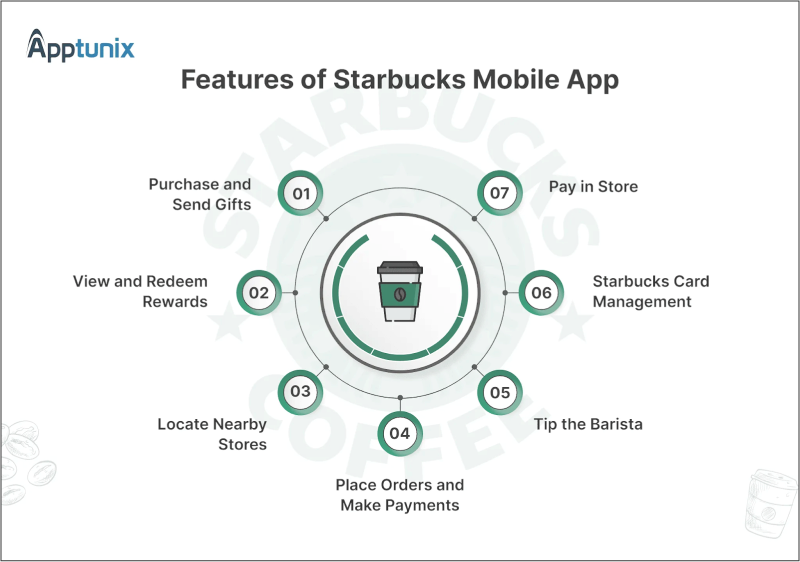
Starbucks takes convenience to the next level by allowing customers to make purchases through the app even before reaching the physical store. This strategic technology integration streamlines the buying process, offering customers a seamless and time-efficient way to engage with the brand.
The emphasis is on enhancing the overall customer experience by blending personalization with convenience, ultimately contributing to customer retention.
Maintain regular communication
If you want to add to your customer experience and retain them, you need to maintain consistent communication. Let’s say a customer signs up for email on your website. You can send out automated welcome emails updating about what they can expect from your subscription. Similarly, if you run a SaaS-based service program, you can send automated messages to remind them about their expiring subscription, promotional offers, etc.
Square Future of Commerce report 2023 revealed that 86% of consumers like to receive communications from businesses they frequently engage with, and 60% indicate email as their preferred channel.
3. Regular feedback and improvement
Customer feedback is a vital component of a great customer experience. Gathering said feedback requires you to listen and learn from your customers about what’s working and what’s not working for them. With this feedback, you’ll be able to take action to answer questions and improve the overall customer experience.
Lyft, the popular ride-sharing service, periodically seeks detailed customer feedback via email. This approach ensures a nuanced understanding of customer sentiment, allowing the customer to feel heard and develop a sense of belonging.
This email makes it easy for customers to share their feedback and allows the company to resolve any issues faced during their shopping experience.
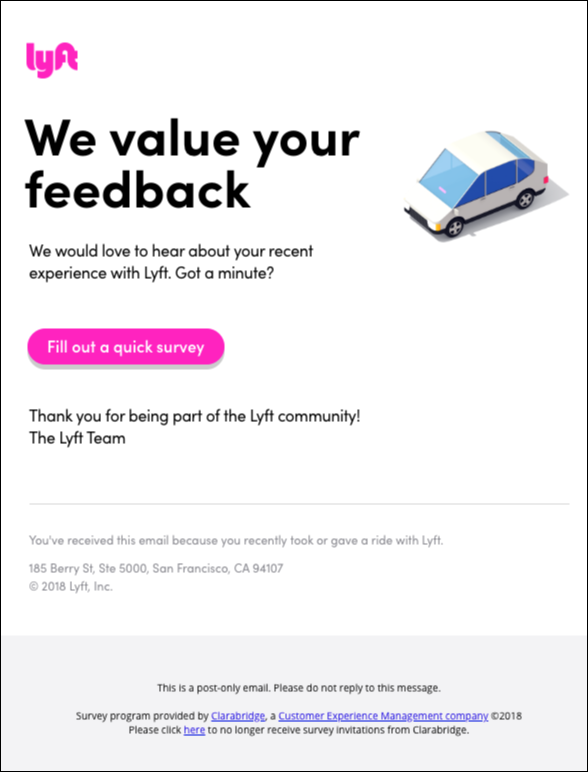
Tip to gather feedback: adaptive surveys
Adapting to evolving customer needs is crucial. Surveys are valuable for gaining insights into customer satisfaction levels regarding a product or service. Gather feedback through various survey methods, including Net Promoter Score (NPS), focus groups, social media, and interactions with customer support.
Don’t be afraid to ask specific questions such as:
- Is there something that we could do better in our service or product delivery?
- Among the following channels, which do you prefer for customer support?
- How would you describe your product/service experience with us?
- Would you recommend us to your friends and family?
- What didn’t meet your expectations, and why?
Analyzing customer feedback
Simply gathering customer feedback is not enough. You must analyze it to leverage insights, comprehend the customer journey, identify issues, recognize patterns, and refine customer retention strategies.
Various customer feedback software options simplify the process of collecting surveys and analyzing the data, providing valuable insights into the customer experience.
Salesforce, a leading CRM for data-driven sales teams, emphasizes dynamic surveys. By periodically updating survey questions, they capture evolving customer expectations, a vital component of adaptive retention strategies.
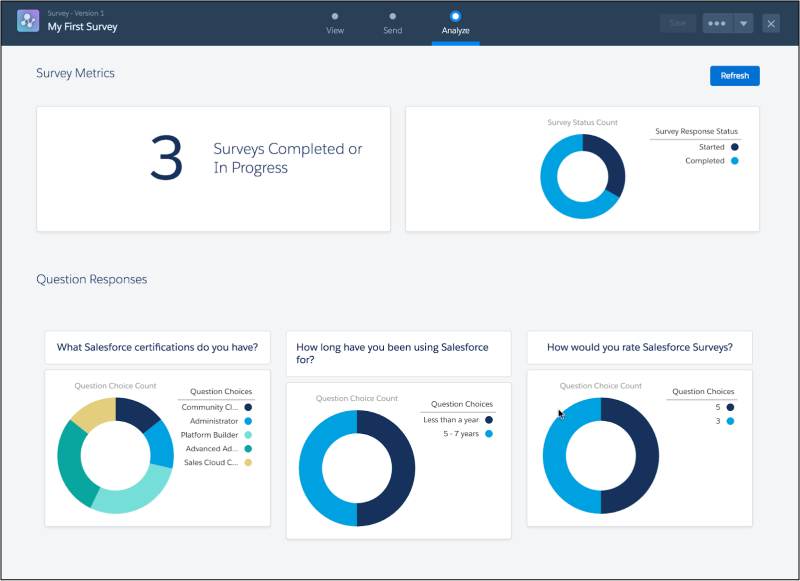
4. Post-purchase engagement
Staying on top of customers’ minds involves strategic communication.
Strategic Email Campaigns
Email marketing is a key player in keeping customers coming back. It’s budget-friendly and super effective. Studies confirm that email is the top choice for boosting customer retention, making it a go-to for businesses building lasting connections.
Here are some customer-focused email campaigns to boost retention:
- Thank-you emails: Show appreciation for your customers to strengthen the connection by sending “Thank you cards.”
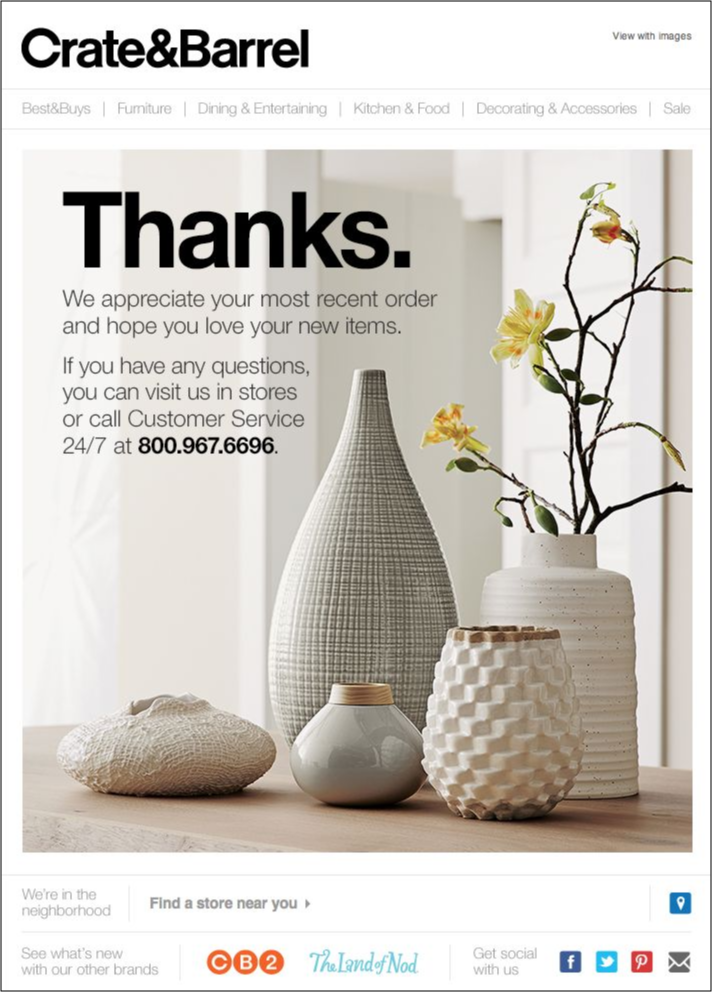
- Personalized recommendations: Suggest products based on their purchase behavior, browse behavior, and preferences for increased engagement. Renowned brand Crate & Barrel provides an excellent example for how to present these product recommendations.
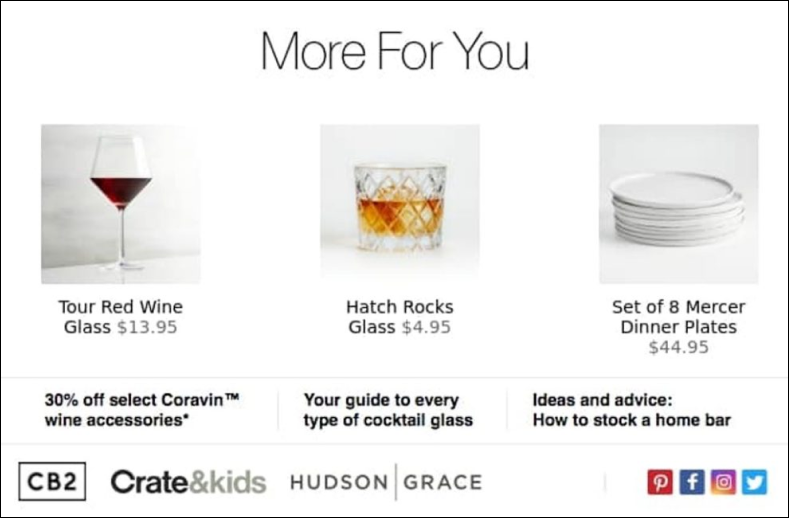
- Exclusive offers: Entice customers through your emails with special deals to spark first purchases and repeat purchases.
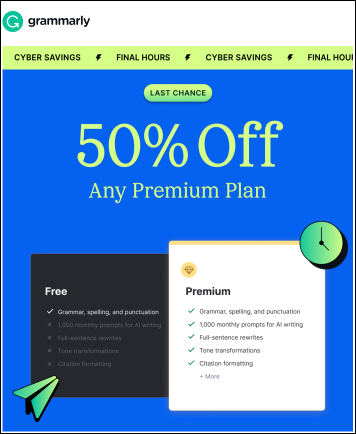
- Re-engagement emails: Remind customers of your brand, encouraging them to explore more, like this email from Reebok.
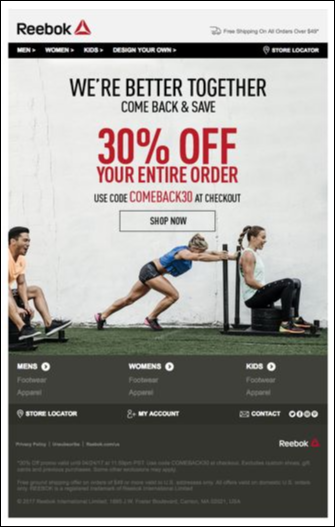
This reinforces your presence and value proposition pre- and post-purchase by sharing product updates, industry insights, and valuable content.
SMS campaigns for timely engagement
SMS provides the opportunity for timely messages such as exclusive offers or product updates which help ensure that customers remain engaged and aware of the brand’s offers.
This SMS campaign example from Redbox informs consumers of the ongoing promotion and highlights some irresistible offers to persuade them to purchase.
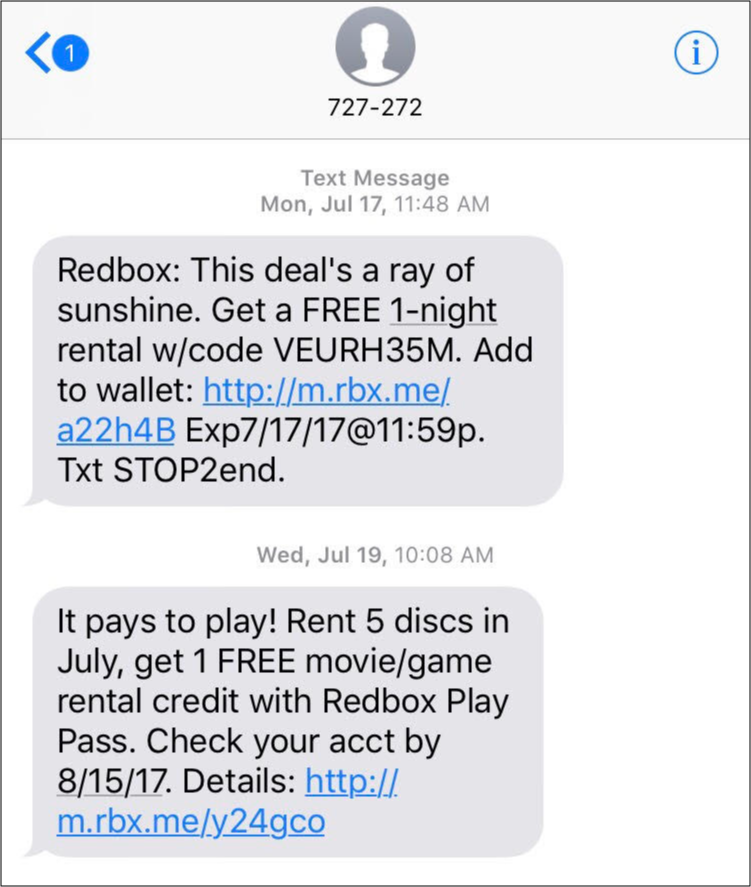
Targeted advertising for relevance
By aligning ads with customer preferences and behaviors, you reinforce brand relevance and strategically position yourself in the customers’ minds during their consideration stages. If they had a first good experience with your company, the chances are they will buy your product or service again.
Look at this targeted ad example from LinkedIn Sales Solutions. It promotes the LinkedIn Sales Navigator tool by positioning itself as the most dependable for lead generation and offering a free trial.
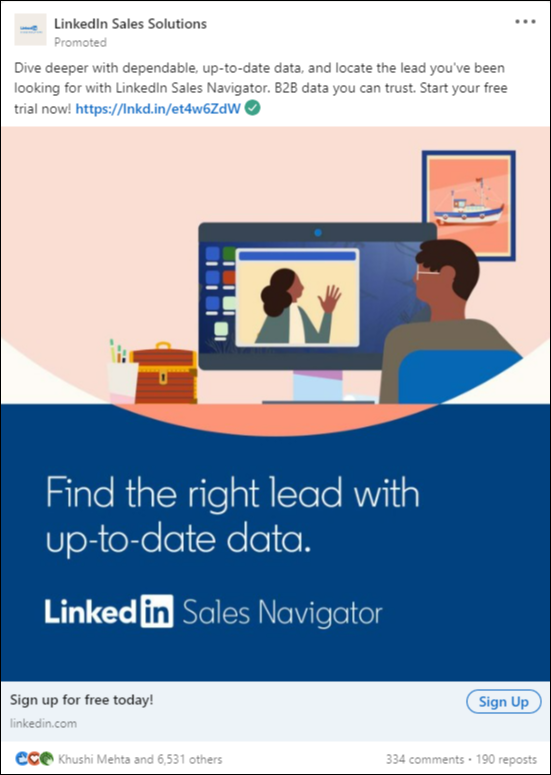
5. Upsell and cross-sell initiatives
You enhance the overall value proposition by offering complementary items. This encourages customers to make additional purchases, fostering loyalty and boosting revenue. What generally entices consumers is that cross-sell products cost less than the original order.
McDonald’s expertly employs strategic product bundling. Throughout the purchase journey, they recommend complementary products, effectively encouraging customers to make additional, value-added purchases.
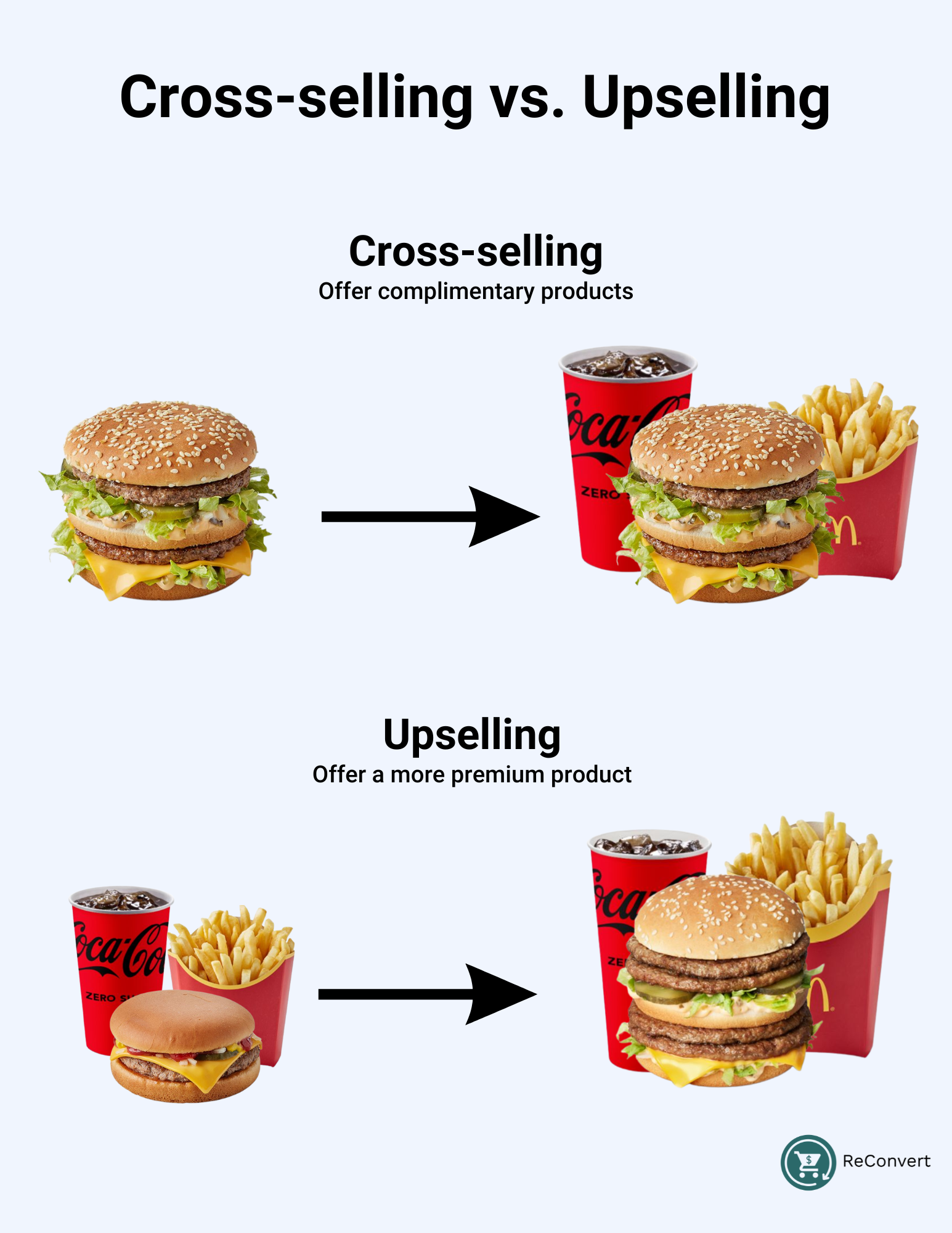
Dynamic pricing models
The dynamic pricing model approach involves personalized, time-sensitive discounts or upgrades, enticing customers to explore additional offerings. It keeps your offerings fresh, relevant, and appealing to your customer base.
Airbnb embraces dynamic pricing, enticing customers to explore additional offerings, turning a single transaction into a continuous engagement.
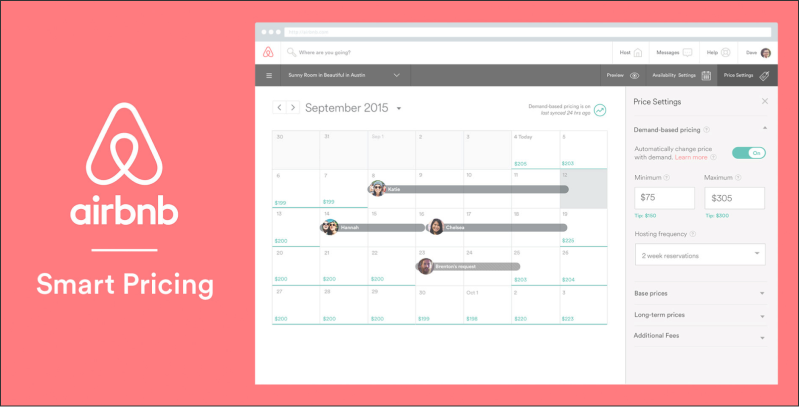
6. Creating a referral ecosystem
Creating a robust referral program for word-of-mouth marketing involves innovation. When you offer incentives to your existing loyal customers to bring in more customers, it builds a mutually beneficial ecosystem.
Dropbox’s referral program doesn’t just reward the referrer but also provides incentives for the referred friend, fostering a symbiotic ecosystem.
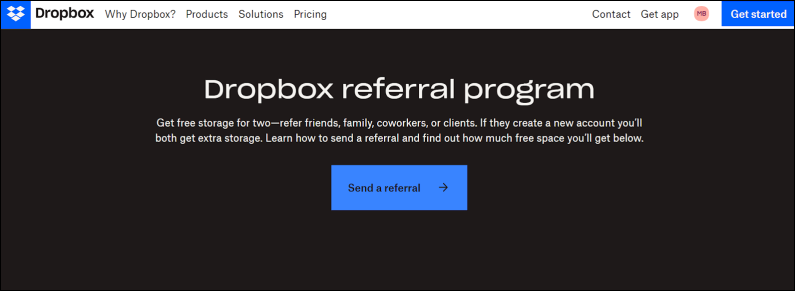
Here’s another example from Bombas, a socially responsible sock and apparel brand. They encourage existing customers to refer Bombas to their friends, offering free socks when the referred friend places an order.
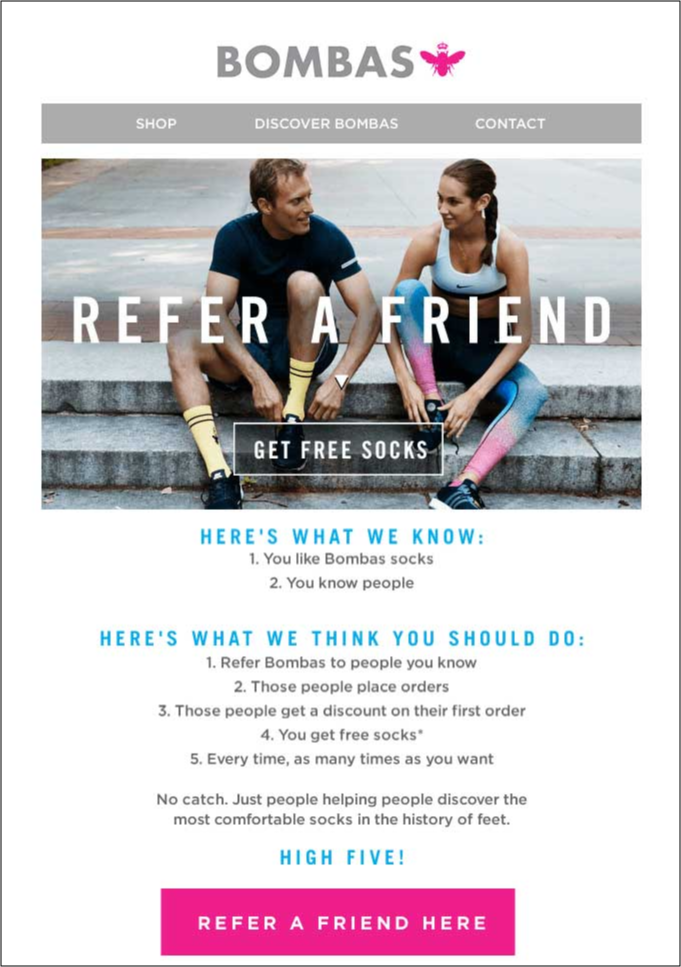
Social media advocacy
64% of consumers prefer brands that engage with them outside the regular buying cycle. Social media serves as an ideal platform for such connections. Effective customer retention strategies actively involve impactful social media campaigns, fostering a community around your brand and actively involving followers by:
- Encouraging them to discuss your brand
- Sharing user-generated content
- Actively participating in their posts
- Promptly responding to comments
For instance, the well-known beauty, cosmetic, and personal care brand Minimalist excels in customer engagement through social media. They respond promptly to questions, amplify brand advocacy, and leverage the virality potential of positive customer experiences.
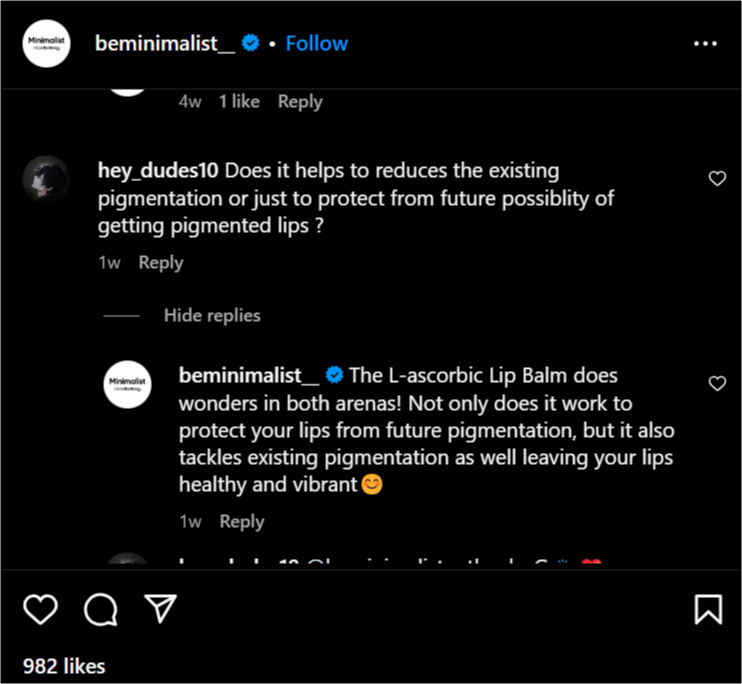
Thought leadership collaborations
Thought leadership is about establishing authority over a particular domain. By intertwining customer referrals with authoritative endorsements, you create a valuable content ecosystem that establishes trust and credibility.
By intertwining customer referrals with authoritative endorsements, you create a referral ecosystem that combines trust and credibility.
An excellent example is Pipedrive, which positions itself as a thought leader through collaborations with industry influencers. This strategic partnership not only benefits the affiliate but also enhances Pipedrive’s credibility within the industry.
7. Relationship building: The essence of loyalty
When you remember your customers’ special dates, they feel valued.
Celebrating milestones
Relationship building involves celebrating milestones. Starbucks, through its rewards program, sends personalized birthday wishes to customers. Such gestures acknowledge customers as individuals and contribute to a sense of emotional connection.

Exclusive events and previews
Artifact Uprising, a premium photo printing brand, provides exclusive updates for loyal customers. This access cultivates a sense of exclusivity while reinforcing the notion that loyalty comes with tangible benefits.
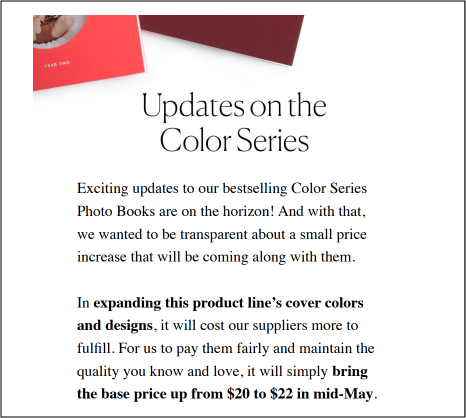
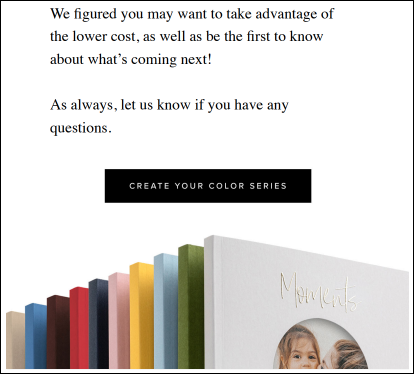
8. The power of personalization
The power of personalization lies in creating a tailored and meaningful experience for each customer, going beyond generic interactions. This involves leveraging customer data to understand preferences, behaviors, & past interactions.
Personalization helps establish a deeper connection between your brand and your customers while showing that you recognize and value them as individuals, not just as transactions. This emotional resonance significantly contributes to customer satisfaction and loyalty. Here are different ways to implement this strategy:
Personalized recommendations
Netflix excels (almost freakishly sometimes) in personalized recommendations. By leveraging past viewing history, they not only recommend movies and shows but curate personalized watchlist experiences as well. These personalized touches contribute significantly to the customer’s sense of being understood and valued.
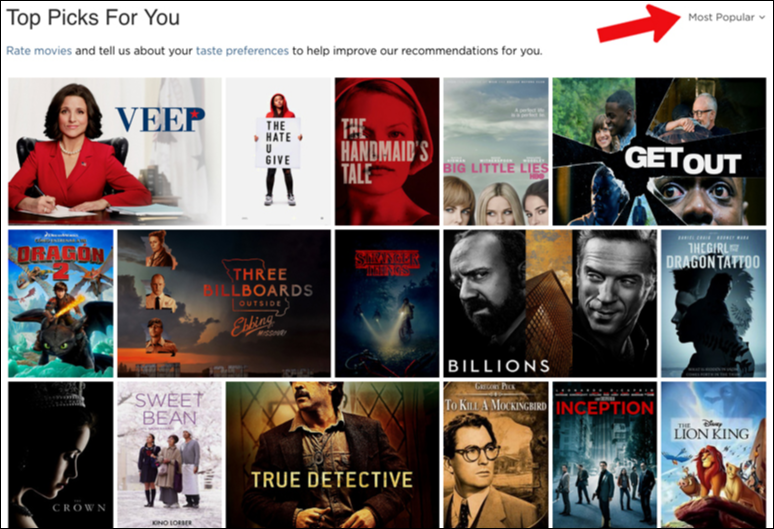
Beyond greetings
Personalization, when done right, transcends greetings. Another example from Bombas exemplifies this by informing customers that a portion of their purchase contributes to charitable causes. This personalized narrative creates an emotional bond, elevating the customer experience beyond transactional space.
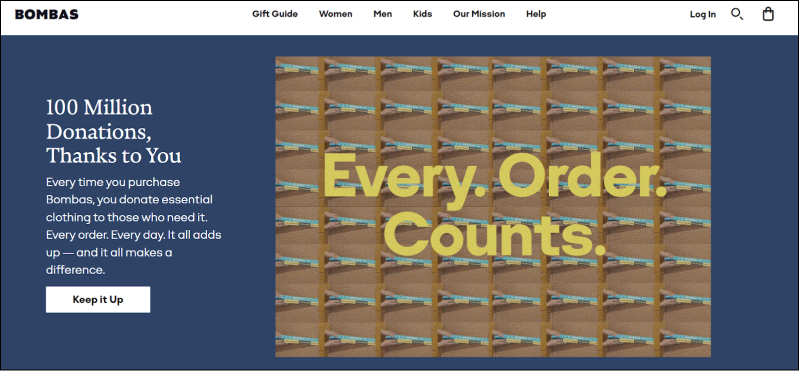
Which Customer Retention Strategy Is Best for You?
The key to choosing the best customer retention strategies lies in understanding your business’s unique needs. Tailor your approach based on whether you operate a physical or online store. The essence is maintaining a customer-centric focus, ensuring strategies enhance the customer experience and foster loyalty.
Happy customers stand as your most valuable asset. Prioritize building relationships, understanding customer needs, and expressing genuine appreciation. By doing so, you not only secure repeat business but also set the stage for increased revenues and sustained growth. Focus on strategies that resonate with your customers for lasting success. If you need help then get in touch with our agency – InboxArmy.




